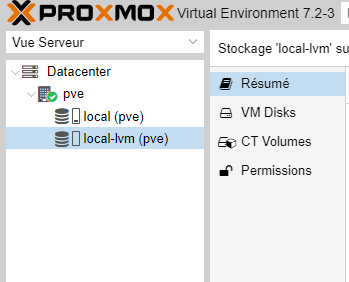For certain needs, it may be necessary to execute a script via crontab by a user other than root. In this tutorial, I will use www-data because my script will be related to my Apache server.
linux
How to Deploy a WireGuard VPN with IPtables
WireGuard is a very lightweight and easy-to-configure VPN that operates on a P2P system. It is available on many platforms like Windows or Android and is incredibly stable!
Install a LAMP server for WordPress
The goal of this tutorial is to set up a WordPress server. For this, we will install and configure Apache and MariaDB. You can use this tutorial for another tool like GLPI, but you will obviously need to check the official website for the required PHP packages.
Delete the local-lvm partition on a new installation
After a new installation, the main disk on which Proxmox is installed consists of two partitions.
local and local-lvm
By default, the virtual machines and containers will be stored on the local-lvm partition.
And on the local partition, the backups, templates, and iso files will be stored.
If you have a second disk or several in a raid, it may be useful to delete the local-lvm partition in order to allocate its space to the local partition to store more content (backups, iso, template, etc.).

Basic commands in Linux (Debian)
Here’s a brief overview of basic Linux commands.
Installation and Configuration of Fail2Ban
The world of Linux is fascinating, and security is a crucial chapter of this journey. Fail2Ban is one of those essential tools for any Linux administrator concerned about protecting their servers. By monitoring system logs, it detects intrusion attempts on services such as SSH, HAProxy, or Postfix. And if an intruder becomes too persistent? Fail2Ban steps in, blocking the offender’s IP address via IPTables. One of the major strengths of Fail2Ban is its flexibility. You can create and tailor your own filters according to your needs. In this article, I will guide you through the installation and configuration of Fail2Ban on Debian.